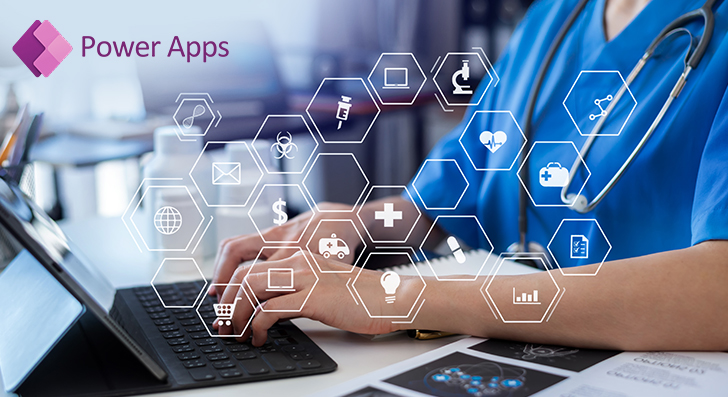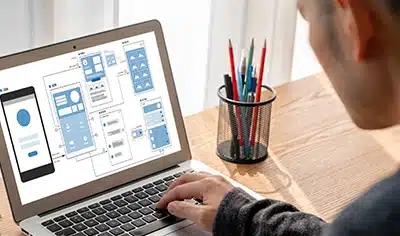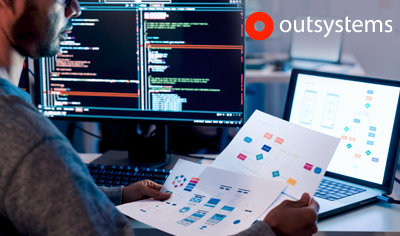The healthcare industry is on the verge of a technological revolution driven by the need to improve patient care, streamline operations, and reduce costs. As the demand for more personalized, cost-efficient, and accessible healthcare increases, the need for innovative solutions to modernize healthcare systems becomes critical.
At the forefront of technological innovation stands Power Apps, a groundbreaking platform that empowers healthcare providers to modernize their operations, streamline workflows, reduce administrative tasks and clinician burnout, and enhance overall patient outcomes. This cloud-based low-code development platform allows healthcare organizations to break free from the shackles of traditional software development. With Power Apps, healthcare organizations can create custom business applications that address specific needs and challenges – all without extensive coding knowledge. This democratization of app development unlocks a world of possibilities for healthcare organizations by enabling them to create innovative solutions that quickly adapt to the ever-changing landscape of healthcare. Now, let’s dig deeper into the real-world use cases of Power Apps revolutionizing the way healthcare organizations operate.
Power Apps Use Cases in Healthcare
1. Patient Registration and Appointment Scheduling
Power Apps in healthcare has revolutionized patient registration and appointment scheduling. Traditionally, this manual, cumbersome, and time-intensive process involves phone calls, extensive paperwork, and manual data entry, leading to inefficiencies and long wait times. Using Power Apps, healthcare service providers can develop custom business applications that streamline and automate the entire patient registration and appointment scheduling process, reducing paperwork and long wait times.
For instance, imagine a low-code application developed using Power Apps that allows patients to fill out the registration form online by securely entering their personal information, medical history, and insurance details. The user-friendly interface of the application guides patients through appointment scheduling by allowing them to view available appointment slots in real-time. This enables patients to choose their preferred time slots and receive instant confirmation with appointment details. Integrating Power Apps in healthcare streamlines the registration process and reduces the administrative burden on healthcare providers while minimizing the risk of errors associated with extensive paperwork and manual data entry. By leveraging Power Apps, healthcare providers can offer a more personalized patient experience that prioritizes convenience, accessibility, and enhanced care.
2. Remote Patient Monitoring
Remote patient monitoring is another popular use case of Power Apps revolutionizing healthcare by empowering healthcare providers to track their patients’ health status remotely. This paradigm shift is facilitated through the integration of monitoring tools and technology that collect health data from patients in real-time and securely transmit it to healthcare providers for remote assessment.
By leveraging Power Apps, healthcare providers can build custom business applications that seamlessly integrate with wearable devices, home medical equipment, and sensors to collect critical health metrics such as heart rate, blood pressure, glucose levels, and oxygen saturation. Utilizing such low-code applications, patients can automatically sync their health data with digital devices, enabling healthcare providers to monitor the patient’s condition remotely and provide timely interventions. For instance, patients with chronic health conditions such as hypertension can track their blood pressure levels and receive guidance from healthcare providers without leaving the comfort of their homes. Similarly, patients with diabetes can track their blood sugar levels and seek consultation from experts remotely. Overall, Power Apps for remote patient monitoring not only reduce the number of hospital or clinic visits but also ensure personalized care that extends beyond the traditional clinical settings, leading to increased patient satisfaction, improved health outcomes, and optimized resource utilization.
3. Clinical Workflow Automation
Traditional clinical workflows entail a range of manual tasks from patient check-ins to appointment scheduling, lab test orders, results tracking, and discharge planning. These tasks are not only time-intensive but also prone to human errors, which can hinder optimal patient care. Power Apps empower healthcare organizations to address these challenges by developing custom business applications that streamline and automate these workflows.
For instance, Power Apps can automate the patient check-in process by allowing patients to self-register for appointments and fill out their personal information online via smartphones. This data will be automatically updated in the EHR system of healthcare institutions, eliminating the need for manual data entry. By automating clinical workflows, healthcare institutions can free up their staff from time-consuming administrative tasks and let them focus on providing improved patient care. This leads to reduced human errors, increased operational efficiency, and enhanced healthcare outcomes.
4. Medication Management
Unlike traditional medication management that demands manual tracking, Power Apps automate and streamline the process of tracking and administering medications by enabling the development of custom applications. For instance, healthcare institutions can develop a medication management app that facilitates patients to receive medication schedules right on their smartphones, set reminders for dosages, and track their adherence to medication regimens. By utilizing these applications, patients can receive notifications and reminders about their medication intake at the prescribed times. This in turn improves patient adherence, leading to better health outcomes.
5. Patient Feedback and Surveys
In healthcare settings, traditional methods of collecting patient feedback involve paper forms or basic online questionnaires that may not provide insights needed to improve patient care. Power Apps addresses this challenge by enabling healthcare organizations to develop custom survey applications that allow patients to provide real-time feedback and suggestions for improvement. Using Power Apps, healthcare institutions can create engaging and interactive survey forms tailored to individual patients to drive high response rates. The best part of using Power Apps is that it allows healthcare organizations to distribute surveys through multiple channels, such as WhatsApp, email, SMS, or online portals, ensuring wide reach. Overall, using Power Apps for patient feedback and surveys allows healthcare providers to foster a culture of continuous improvement and establish a more patient-centric healthcare experience.
Summing Up
Power Apps has emerged as a game-changer by revolutionizing the way healthcare providers deliver patient care and manage day-to-day operations. From patient registration and appointment scheduling to patient feedback collection, the use cases of Power Apps in healthcare settings are vast and varied showcasing the platform’s versatility and adaptability. If you are also planning to leverage the potential of this low-code platform, you may consider hiring Microsoft Power Apps developers from a reliable tech partner.






